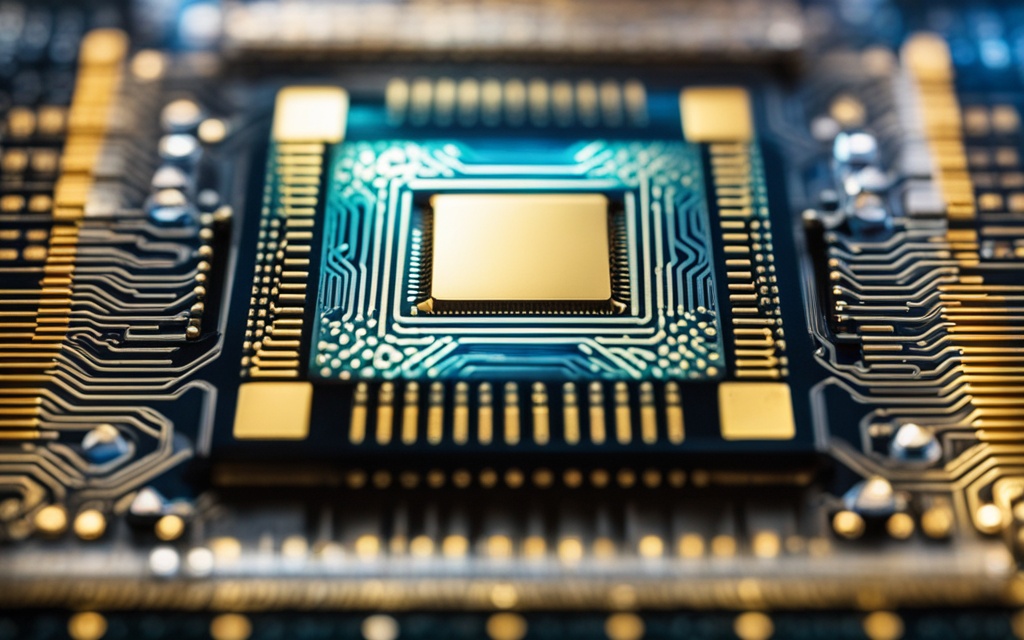Table of Contents
It’s crucial for anyone wanting a better computing experience to understand how to check their CPU’s core count. The number of cores in a CPU is key for good multitasking. It boosts the efficiency of the system. Many people don’t pay much attention to this, and it affects how well they can do intense tasks. For instance, gaming or heavy computing might suffer1.
Alaina Yee, a well-known tech journalist at PCWorld, highlights why it’s important to know your core count. This ensures your computer meets the demands of your programs. Today’s CPUs can have between two to eighteen cores, sometimes even more. Knowing what you have can greatly improve your computer’s performance. This makes such knowledge an essential part of your technology toolbox.
Key Takeaways
- Knowing your CPU’s core count helps improve performance in multitasking scenarios.
- Modern CPUs are equipped with two to eighteen cores, enhancing efficiency in task handling.
- Utilising tools like Task Manager or System Information makes it easy to check core counts.
- Physical cores are distinct from logical cores, significantly affecting processing power.
- Benchmarking can provide insight into your CPU’s performance beyond just core numbers.
Understanding CPU Cores and Their Importance
CPU cores are key to modern computing devices. They are the individual units in a central processing unit. Knowing about CPU cores helps us understand their role in computing performance. This is especially true for multitasking and running demanding apps.
The importance of CPU cores shows in many situations, like gaming and video editing. A CPU with many cores can handle different tasks at once. This significantly boosts its power. For example, server-class CPUs often have at least 8 cores. Some even have more than 30 cores, allowing them to do complex tasks and multitask efficiently2.
For everyday users, a CPU with 4-6 cores usually meets their needs well. It works great for regular applications3. Having more cores means better multitasking. It allows for smoother performance in demanding situations. The newest CPUs with more cores offer enhanced multitasking. They don’t slow down, meeting modern software needs.
Simply, understanding CPU cores shows us the hardware’s power. It also indicates how it can improve our computing experiences. Knowing more about core architecture helps users get the most out of their devices.
How to Check the Cores of a CPU on Windows
For Windows users keen to find out how many CPU cores they have, two main methods exist. One can use the Task Manager or the System Information utility. These give easy ways to check your CPU’s cores, showing performance levels and capabilities.
Using Task Board to Identify Core Count
Task Manager is the fastest way to see how many CPU cores you have in Windows. Open it by pressing Ctrl + Shift + Esc or by typing ‘taskmgr’ in the command line. In the Performance tab, it shows the number of logical processors. While it shows logical processors, some might miss seeing the number of physical cores. You might see a total of 16 cores by looking at processor distribution4. For those on older Windows versions, CPU Usage History can visually show core numbers through the count of graphs.
Exploring System Information for Detailed Insights
Another way to check CPU cores in Windows is via the System Information tool. Just search “System Information” in the Start menu. It provides details about the processor, such as physical and logical core numbers. If you’re trying not to check each CPU manually, this gives a clear overview. It’s especially useful for tasks like server licensing where only physical cores count5. This method is crucial for ensuring the core count meets server needs. Below is a comparison of both methods:
| Method | Access | Details Provided | Recommended Use |
|---|---|---|---|
| Task Manager | Ctrl + Shift + Esc or ‘taskmgr’ | Logical processor count, basic performance metrics | General performance evaluation |
| System Information | Search “System Information” in Start Menu | Detailed processor architecture, physical and logical cores | Comprehensive analysis for licensing or in-depth checks |
How to Check the Cores of a CPU on Linux
Knowing how to check your CPU’s cores on Linux boosts system performance. The lscpu command is key for this. It gives you CPU details like architecture and core amounts. You learn about cores, sockets, and threads.
This knowledge is vital for analysing CPU structure. Understanding each component helps in assessing the system’s capabilities.
Utilising the lscpu Command for Core Verification
Using the lscpu command, you uncover a lot about your CPU. It shows the number of CPUs, cores per socket, and threads per core6. You also see clock speeds and cache sizes. For example, a single socket system with four cores means you have four physical and, with hyper-threading, eight logical cores7.
Run the command in your terminal to see your CPU’s layout. It’s a clear way to understand your system’s structure.
Understanding Sockets, Threads, and Physical Cores
Grasping the link between sockets, threads, and cores is essential. Each socket can hold many cores, powering your computer6. On Linux, threads mean more tasks at once, especially on Intel’s hyper-threading CPUs. Turning off hyper-threading in the BIOS changes how many cores you see and affects performance7.
Check the cpuinfo file for deep CPU details. It reveals things like vendor ID and features6. This information is crucial for evaluating and upgrading your system.
Learning about these parts helps you judge your system’s power. It guides better decisions for upgrades or changes.
| Property | Example Unit | Details |
|---|---|---|
| Socket | 1 | Total number of CPU sockets in the system. |
| Cores per Socket | 4 | Physical cores available per socket. |
| Threads per Core | 2 | Logical threads created per physical core due to hyper-threading. |
| Total Physical Cores | 4 | Total physical processing units available. |
| Total Logical Cores | 8 | Overall processing capabilities including hyper-threading. |
How to Check the Cores of a CPU on Mac
For Mac users, knowing how to check the CPU cores is key for better performance. One easy way is by using the About This Mac feature. This shows you the key hardware details. It tells you the total number of physical cores. Just click the Apple logo and choose ‘About This Mac’. Even though it’s easy to use, it doesn’t show everything about hyperthreading in your Mac.
Accessing ‘About This Mac’ for Core Details
The About This Mac option shows your Mac’s setup, especially the CPU. If you have the Apple M1 CPU, it typically has an 8-core configuration8. There are 4 high-performance cores and 4 high-efficiency cores. The high-performance cores handle tough apps, while the efficiency cores save power9. Understanding your core count is useful to know what your machine can do.
Using Terminal Commands for Comprehensive Core Data
To get more detailed CPU info, Mac terminal commands are very helpful. Using sysctl hw.physicalcpu hw.logicalcpu in the terminal shows both physical and logical core counts. Though sysctl is better for Intel, Apple Silicon users might see different results10. It’s important to know the difference between core types because many apps need multiple cores. This utilises the CPU’s full potential but can also challenge the memory and system efficiency8.
| Core Type | Count | Purpose |
|---|---|---|
| Performance Cores | 4 | Maximising performance for demanding tasks |
| Efficiency Cores | 4 | Lower energy consumption for simple tasks |
Impact of Hyperthreading on Core Count
Hyperthreading is an Intel innovation that lets a single core act as two. This boosts multitasking, as it allows one core to handle multiple tasks at once. It’s great for improving performance in a lot of programs.
Using hyperthreading, a physical core can work with its logical partner. This teamwork can boost performance without using much more space or power. It usually adds less than 5% to the size and power use of a single core11.
However, hyperthreading doesn’t always help equally. Its benefits change depending on the job and memory architecture. When two threads fight for memory, it can slow things down12. So, it’s better to look at real progress, not just CPU meters, to truly understand performance12.
In situations with lots of threads, hyperthreading helps use resources better. But in some single-thread tasks, turning it off might improve things. This is often true in games designed for up to four cores11. To get the best system performance, it’s key to know the difference between physical and logical cores. This knowledge is crucial for choosing the right CPU.
Comparing Physical and Logical Cores Across Operating Systems
The difference between physical vs logical cores is key to understanding CPU strengths. Physical cores are actual parts inside a CPU. They show the real power of a CPU. Logical cores act like virtual copies of physical ones, made by technologies like Simultaneous Multithreading (SMT). A CPU with four real cores can use SMT to work like it has eight threads. This shows how logical cores make a CPU seem better at handling many tasks at once13.
Looking at core comparison across OS, we see that Windows, Linux, and macOS give different core counts. This difference can confuse users about the true ability of their CPU. For example, ‘lparstat’ might show 8 logical CPUs but not the actual physical core count14. Each OS has its own way of showing core information. This can mislead users about what their CPU can really do.
Also, CPUs with more cores are now changing how well computers perform. This is very noticeable in tough tasks, like AI processing13. Knowing about physical and logical cores helps users choose the right CPU. This is important whether you’re buying hardware for work or just for personal use.
Tips for Evaluating Your CPU Performance Based on Core Count
To improve your computing, it’s important to start with CPU performance tips. Watch your system’s optimal CPU usage when you’re doing different tasks. Run multitasking benchmarks to see how well your CPU handles several tasks at once. This tells you how good your processor is when it’s under pressure.
Use the Task Manager in Windows or Performance Monitor too. These help you watch how your CPU is doing, showing how much each core or thread is being used. Try out stress tests like Prime95 to check how sturdy and reliable your CPU is at its max. Knowing your CPU’s behavior under heavy tasks helps with future upgrade plans.
Think about what you usually do on your computer when you’re planning a CPU upgrade. For creative work, you might want a CPU with more cores and threads. But for gaming, you might prefer less cores with faster speeds. Don’t overlook the cache size and thermal design power (TDP). They can also guide your choices to fit what you need.
Looking into your CPU’s performance can really show its true power for your tasks. Using these tips ensures your CPU works its best. They help you make smart choices for a great computing experience. Remember, the right decisions enhance how well your computer performs.
| Evaluation Method | Description | Best For |
|---|---|---|
| Multitasking Benchmarks | Assess CPU handling of multiple applications simultaneously. | General Performance |
| Task Manager | Monitor CPU usage per core in real time. | Windows Users |
| Performance Monitor | Provides detailed information on CPU metrics. | Advanced Users |
| Stress Tests | Evaluate CPU stability under high loads. | Content Creators and Gamers |
| Upgrade Considerations | Match CPU specifications to your primary tasks. | All Users |
Conclusion
Knowing about CPU cores is key for improving system performance. This includes gaming, making content, or doing daily tasks. By learning the importance of core verification, people can choose the right hardware. This lets them tune their systems well. Knowing the difference between physical and logical cores helps boost processing power. CPUs with logical cores can manage two tasks at once. This boosts your ability to do many things at the same time18.
How many cores you need can vary. For gamers, having four cores or more is beneficial. It lets them run demanding games and programs smoothly1920. Also, using tools like the lscpu command in Linux helps understand CPU performance. This information can help make systems run better18.
Learning to check your CPU’s cores is crucial for the best system performance. Choosing the correct number of cores and speed makes a big difference. It improves your computer experience a lot. This knowledge also prepares you for future upgrades and new technology.
FAQ
What are CPU cores and why are they important?
CPU cores are the individual parts inside a CPU that do tasks. They help computers do many things at once, making them faster. This is especially important for big tasks like gaming and video editing.
How can I check the number of CPU cores on a Windows computer?
To find CPU cores on Windows, open Task Manager with Ctrl + Shift + Esc. Go to the Performance tab to see physical and logical cores. Or, use System Information for detailed CPU info.
What command should I use to check CPU cores on Linux?
Use the ‘lscpu’ command in Linux’s terminal to see CPU cores. It shows detailed data, like how many cores each socket has and the total threads.
How do I find out my CPU core count on a Mac?
Mac users, click the Apple logo and choose ‘About This Mac’. For more info, use terminal commands `sysctl hw.physicalcpu hw.logicalcpu` to find out core counts.
What is hyperthreading and how does it affect CPU cores?
Hyperthreading lets one CPU core handle two threads at once, boosting multitasking. But it can mix up physical and logical core counts when turned on.
Why is it important to understand the difference between physical and logical cores?
Knowing the difference between physical and logical cores helps pick the right CPU for your needs. It’s key for tasks that need a lot of power.
What tips can help evaluate my CPU performance based on core count?
To check CPU performance, run multitasking tests and monitor CPU use in heavy tasks. Matching CPU cores with your software needs ensures the best performance.
Source Links
- https://www.howtogeek.com/762125/how-to-see-how-many-cores-your-processor-has/ – How to See How Many Cores Your CPU Has
- https://www.trentonsystems.com/en-us/resource-hub/blog/how-many-cores-are-enough – How Many Cores are Enough?
- https://www.geekompc.com/what-is-a-core-in-a-cpu/ – What Is a Core in a CPU? How Many Do I Need? – GEEKOM
- https://learn.microsoft.com/en-us/answers/questions/1184684/help-with-how-to-find-number-of-cpu-and-cores-in-w – Help with how to find number of CPU and Cores in Window Server 2016? – Microsoft Q&A
- https://community.spiceworks.com/t/how-to-find-out-how-many-cores-the-cpu-of-my-server-has/352516 – How to find out how many cores the CPU of my server has
- https://www.tomsguide.com/how-to/how-to-find-cpu-info-linux – How to find CPU information in Linux
- https://www.fosstechi.com/check-cpu-cores-linux/ – How to Find CPU Cores in Linux – FOSSTechi
- https://forums.macrumors.com/threads/what-are-my-cpu-cores-doing-in-macos.2409771/ – What are my CPU cores doing in MacOS?
- https://osxdaily.com/2023/05/23/find-how-many-cpu-cores-mac-has/ – How to Find How Many CPU Cores a Mac Has
- https://macperformanceguide.com/Optimizing-Cores.html – CPU Cores Explained
- https://superuser.com/questions/1166529/performance-impact-of-hyper-threading – Performance-impact of Hyper-Threading
- https://serverfault.com/questions/767730/how-many-cpus-should-be-utilised-with-hyperthreading – How many CPUs should be utilised with Hyperthreading?
- https://www.hivelocity.net/blog/what-is-cpu-cores-multithreading-vcpu/ – What Is CPU? Cores, Multithreading, & vCPU
- https://community.ibm.com/community/user/power/discussion/how-to-get-physical-processor-count-on-aix – How to get Physical processor count on AIX
- https://stackoverflow.com/questions/3748136/how-is-cpu-usage-calculated – How is CPU usage calculated?
- https://www.linkedin.com/advice/3/what-best-methods-measuring-processor-performance – What are the best methods for measuring processor performance?
- https://www.techradar.com/computing/cpu/how-to-choose-a-cpu-top-tips-for-finding-the-right-chip-for-your-pc – How to choose a CPU: top tips for finding the right chip for your PC
- https://karandeepsingh.ca/post/mastering-cpu-cores/ – Mastering CPU Cores: Strategies for Monitoring and Optimization
- https://www.linkedin.com/pulse/understanding-cpu-cores-brains-behind-your-computers-performance-wgnhf – Understanding CPU Cores: The Brains Behind Your Computer’s Performance
- https://www.hp.com/in-en/shop/tech-takes/post/cpu-cores-how-many-do-i-need – CPU Cores How Many Do I Need | HP® Tech Takes








